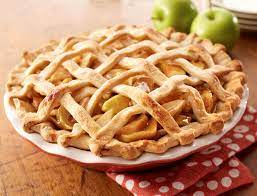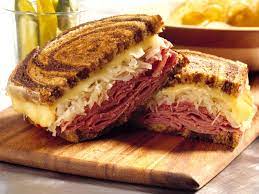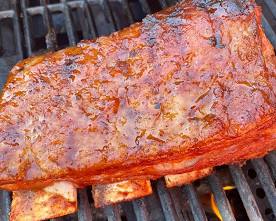Hot dog
History: Although the Germans and Austrians disagree on who first invented the hot dog, the mention of sausage can be traced back to Roman times, but the first thing that caught the attention of the American public was the German "sausage" sausage. This sausage was very popular at the Chicago Columbian Exposition in 1893, and many people say that the hot dog bun was invented there.
What to try-and where to eat: Gene and Jude's in River Grove, Illinois, Chicago-style, ketchup-prohibited dogs; Detroit, Coney Island, the classic Corny dog; and the recession of Gray's Papaya in New York City. programme.
Apple pie

History: Perhaps the most iconic item on all American menus, apple pie first came to the United States through British, Swedish and Dutch immigrants. Due to its low price, it has been a staple of colonial diets for more than a century. During World War II, apple pie was inseparable from American culture and has since become a fixed product of the United States.
What to try—and where to eat: French apples from A la Mode Pies in Seattle; English custard apple pie from Cowbell in New Orleans; and pie apple pie dangerously delicious pie from Washington, D.C.
Reuben Sandwich

History: Whether it is the creation of a man named Reuben Kulakofsky in Nebraska, or the original dream of the owners of Reuben Delicatessen in New York City, classic corned beef, Swiss Cheese and sauerkraut sandwiches are all symbolic cuisines of the United States in the 20th century, and Jewish, German and Irish ingredients have all appeared.
What to try-and where to eat: Zingerman's Reuben at Zingerman's Delicatessen in Ann Arbor, Michigan; Blackstone Reuben originally at Crescent Moon in Omaha, Nebraska; and Reuben hot sandwiches at Katz's Delicatessen in New York City.
Buffalo Chicken Wings
History: There is a version of the story that Teresa Bellissimo invented Buffalo chicken wings to take advantage of the chicken wings accidentally delivered; another said it was a late-night snack prepared on the spot to feed her son and his drinkers. In any case, the origin of the Buffalo Wing is hardly disputed. It was first supplied in 1964 at the Anchor Bar in Buffalo, New York.

What to try-and where to eat: the world-famous Wings at the Anchor Bar in Buffalo, New York; Fitzpatrick's — yes, that spelling — or the Buffalo City Wing at Kettle Blake in Brooklyn; and Pline, Connecticut J. Timothy's "Wings of Dirt" in Vail.
Clam Chowder

History: Clam Chowder, probably inspired by seafood stews from northern France and southwest England, first landed in New England in the early 1700s. By the middle of the 18th century, recipes began to appear in colonial newspapers. Since then, the change from Manhattan to Seattle has become a part of American cuisine.
What to try-and where to eat it: Smoked Salmon Chowder at Seattle's Pike Chowder; New England Clam Chowder at Legal Sea Foods in Boston and elsewhere; and Manhattan Claw Chowder at the Grand Central Oyster Bar in New York City.
BBQ ribs

History: Barbecuing is as old as this country—George Washington even mentioned the Barbecue in Virginia in 1769. Whether you prefer the wet ribs in Memphis, the hearty barbecue sauce in Kansas City, or the pork menu in Carolina, barbecue in the United States has evolved from a basic cooking form to a highly specialized regional art.
What to try-and where to eat it: specialty dry rub ribs at Pappy's Smokehouse in St. Louis, Missouri; Texas beef ribs at Louie Mueller Barbecue in Tyler, Texas; a wet rib at Corky's in Memphis; and barbecue ribs at Dallas Smoke.